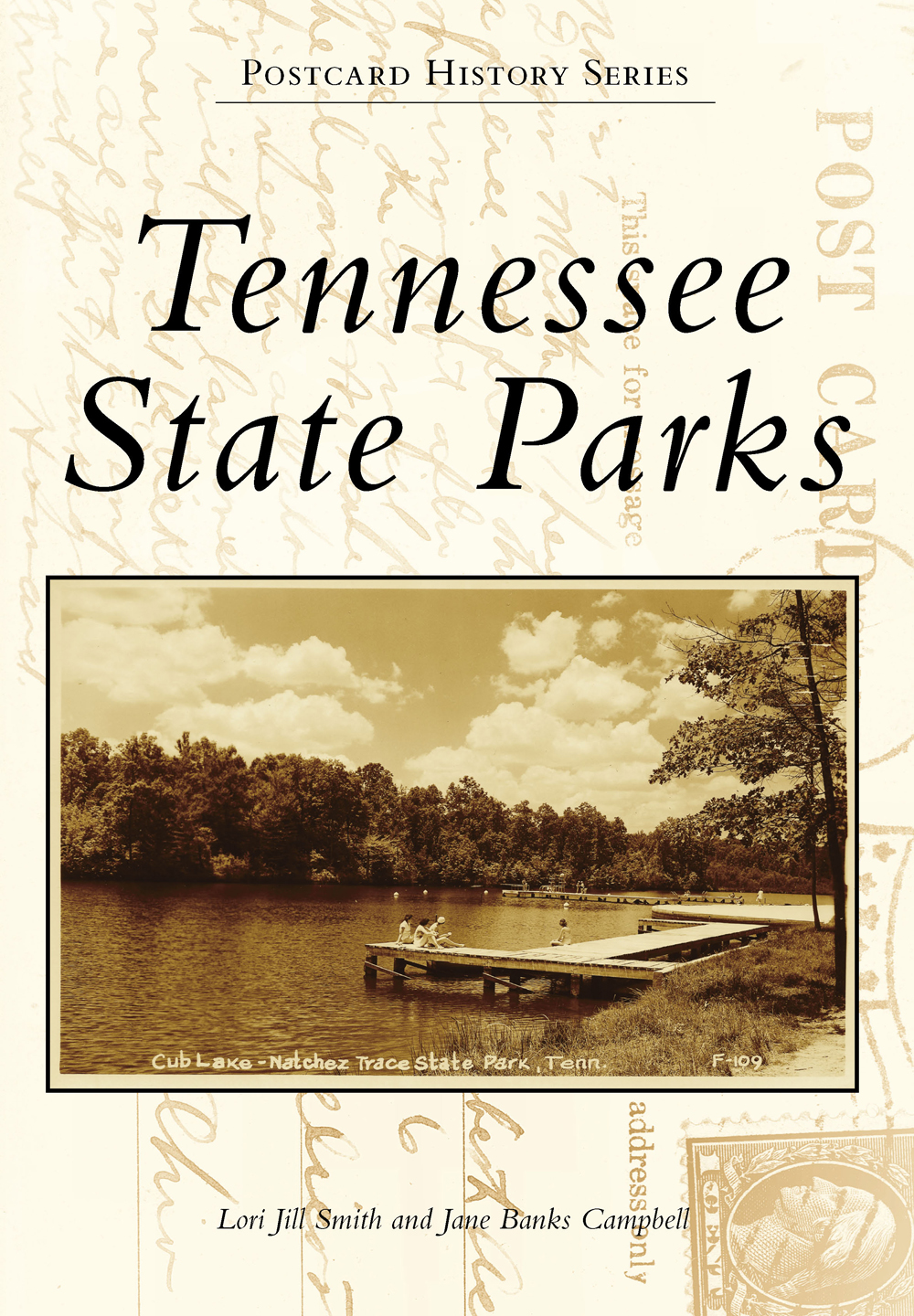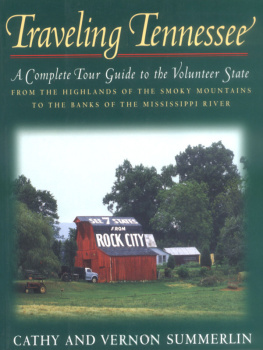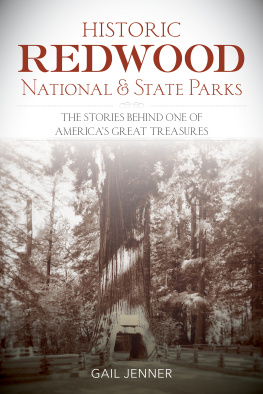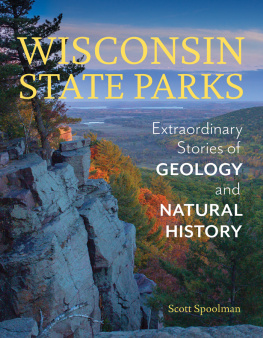
POSTCARD HISTORY SERIES
Tennessee
State Parks

Shown here is a promotional postcard about Tennessee State Parks with an enticing message: Spend your playtime anytime in Tennessees State Parks. There is something for everyone to enjoy in the parks across the state of Tennessee, including water and boating activities, horseback riding, hiking and viewing breathtaking natural beauty, golfing, bird-watching, and exploring history. (Authors collection.)
ON THE FRONT COVER: This real-photo postcard shows swimmers and sunbathers enjoying the beautiful Cub Lake in Natchez Trace State Park, located in West Tennessee in Wildersville. The park is located within a larger protected area encompassing 48,000 acres of woods, thus visitors to the park are offered many miles of hiking and riding trails. (Authors collection.)
ON THE BACK COVER: This real-photo postcard shows visitors enjoying the lounge in the inn at Paris Landing State Park, located in West Tennessee in Buchanan. Although many of the main attractions at the state parks are outside, visitors also enjoy socializing, playing games, and dining in the recreational buildings including inns, cabins, and lodges. (Authors collection.)
POSTCARD HISTORY SERIES
Tennessee
State Parks
Lori Jill Smith and Jane Banks Campbell

Copyright 2016 by Lori Jill Smith and Jane Banks Campbell
ISBN 978-1-4671-2499-7
Ebook ISBN 9781439659625
Published by Arcadia Publishing
Charleston, South Carolina
Library of Congress Control Number: 2016950046
For all general information contact Arcadia Publishing at:
Telephone 843-853-2070
Fax 843-853-0044
E-mail
For customer service and orders:
Toll-Free 1-888-313-2665
Visit us on the Internet at www.arcadiapublishing.com
To all those who enjoy the beauty, fun, and history of Tennessee State Parks
CONTENTS
ACKNOWLEDGMENTS
We are especially grateful to Deputy Commissioner Brock Hill of the Tennessee Bureau of State Parks and Conservation for his help and enthusiastic support. We would also like to thank the following individuals and institutions for making this publication possible by generously sharing their time, expertise, and postcards and all the other countless ways of giving that have made this project so rewarding and enjoyable for us: photographers Walter Matson Cline and Walter Matson Cline Jr.s family members Cathy Cline, Haley Morgan, Bert Caldwell, Kathy Ives, and L.D. Thompsons daughter Mary Jane King for their support; Goodlettsville, Tennessees Richards and Southern, Inc., owner Terry Calonge for permission to use vintage Southern Post Card Company postcards; Charlotte, North Carolinas Aerial Photography Service, Inc., owners Mohammad, Saeed, and Feroz Jamal and general manager/graphic designer Gregg Balkcum for permission to use vintage Asheville Post Card Company postcards; Curt Teich Postcard archives coordinator Heather Johnson; Arcadia senior title manager Liz Gurley; fellow Arcadia author Lisa Ramsey; State of Tennessee librarian and archivist Charles A. Sherrill, archivist Darla Brock, archival assistant Gibb Baxter, and reference librarian Trent Hanner; Cookeville History Museum manager Beth Thompson, exhibit specialist Pam Philpot, and education specialist Ashley McKee; Tennessee Bureau of Parks and Conservation executive assistant Kim Bernal Ridings; University of Tennessee at Martins Paul Meek Library senior library assistant in Special Collections Karen Elmore; Paris-Henry County Heritage Centers Sandy Green and Sara Edenhofer; Henry County archivist Stephanie Tayloe; Katherine Johnson, Norris Dam State Park; Kelly Rosalia; Jill Banks; and Kay and the late Marvin Hammond.
We are also very appreciative to our families who gave us their patience, love, and support while we completed this projectto our husbands, Nathaniel Smith and Ronald Campbell, and to Phoebe and Amelia Smith.
Unless otherwise noted in the courtesy lines, all images are from the authors collection. The authors have recognized companies that have given them permission to use their images in the courtesy lines following the images. Againthanks go to everyone who had a part in making this project possible.
INTRODUCTION
Within its bordersfrom the cypress marshes in the west to the hills and valleys in the middle region to the lofty mountains in the eastTennessee has 56 state parks that showcase the states natural beauty, recreational offerings, historical significance, and breathtaking wonders.
According to Deputy Commissioner Brock Hill of the Tennessee Bureau of State Parks and Conservation, Tennessee State Parks have been a part of the lives of the people of Tennessee since 1937. Over those 80 years, many of our guests memories have been documented in postcards. This collection of vintage postcards demonstrates the special qualities that our state park system has always held in the hearts of Tennesseans. In many ways, our state parks are the story of us: the story of the known and the unknown heroes, the landscapes that protect these special places and the stories they hold forever.
State parks did not begin to develop in Tennessee until the 1930s. The federal government, working through the National Park Service and New Deal agencies, began the development and provided the groundwork for the structure of the parks. The Tennessee Valley Authority (TVA) made a major contribution to the development of Tennessees state parks when it constructed recreational areas along the shoreline of lakes. New Deal agencies, such as the Resettlement Administration (RA), the Civilian Conservation Corps (CCC), and the Works Progress Administration (WPA), played important roles in the development of the states early parks. The RA worked to relocate residents from lands severely eroded by overuse. That land was then reforested and measures to control erosion through check dams and putting in plants such as kudzu were introduced. The CCC and the WPA worked to build much of the infrastructure of the early parks, including cabins, swimming beaches, lodges, picnic areas, smaller lakes, roads and trails, and bathhouses. Tennessees oldest parks and forests were deeded to the states Wildlife Resources Agency (WRA) by the National Park Service, the US Forest Service, or TVA.
Tennessee has 85 state natural areas. Twelve state parks are either state natural areas or have a state natural area within their boundaries. These parks include Big Cypress Tree, Burgess Falls, Cumberland Mountain, Dunbar Cave, Fall Creek Falls, Frozen Head, Meeman-Shelby Forest, Montgomery Bell, Pickett, Radnor Lake, Rock Island, and South Cumberland. Eight parks are designated as historic parks and include Cordell Hull Birthplace, Fort Loudoun, Fort Pillow, Johnsonville, Port Royal, Red Clay, Sgt. Alvin C. York, and Sycamore Shoals. Old Stone Fort and Pinson Mounds are archaeological parks, and Seven Islands is a birding park.
Since the parks are located throughout the state, the organization of the states park system can be presented in various ways. The authors have selected a presentation of the 56 parks by dividing the state into its three regionswestern, middle, and easternand have presented the parks alphabetically in each section. The number of postcards shown for each park was influenced by availability or mere existence. The year in parentheses following the name of the state park in the text is when the park became a part of the Department of Environment and Conservation (or formerly the Department of Conservation, prior to 1991).
Next page






